Activist Chief Judge Keeps Asking the Courts, 'Can't We Do Better?'
The New York Law Journal by Daniel Wise and Jeff Storey - December 8, 2008
On a Saturday six years ago, at one of the countless court functions she attends all over the state, Chief Judge Judith S. Kaye learned to her dismay that more than 6,000 children freed for adoption still were waiting for new parents. "They were in limbo," she said in a recent interview. "That upset me." First thing Monday morning, she called the heads of state and city children's services agencies and invited them to her chambers to discuss ways to find permanent homes for more children in foster care. "When the chief judge calls, people come," Chief Judge Kaye remarked matter-of-factly. The product of that meeting was "Adoption Now," a collaborative effort of the courts and the child care agencies to streamline the process by, among other things, giving administrative priority to adoptions, adding resources in adoption cases and changing court procedures to expedite determinations. The ongoing partnership has reduced the number of children "in limbo" to around 3,400, a significant improvement but still not enough for Judge Kaye, who aimed for 2,500 and hopes for a "paradigm shift" that will drive the number down still further until it approaches zero. Judge Kaye's response to the adoption issue mirrors the activist approach she has taken on a myriad of matters in her 15 years at the top of the state court system.
In addition to her "adjudicative" functions deciding cases on the Court of Appeals, Judge Kaye serves as the chief executive officer of a court system with a $2.5 billion budget, approximately 1,200 judges and more than 16,000 non-judicial employees. Administrators anticipate that New York courts will receive 4.3 million new filings in this year, second only to California among the states. Judge Kaye sometimes has been faulted for both the pace of the change she has sought and the direction of individual initiatives. But she has not let the criticism slow her down. "Stability is important to the courts," she acknowledged, but she added that "you need something that is sensible for today. You have to anticipate the future." A self-professed optimist who runs an operation with "lots and lots of problems," she continually asks herself and others, "Can't we do better?" She starts by "thinking about the courts and what's not working well" - information she acquires by being "out there," listening and observing conditions. "You have to figure out whom to bring into the picture to change things, and then you do it." "Sometimes, it works," she summarized wryly. Judge Kaye said it would be "arrogant" to claim that she had made no mistakes, but she declined to specify her own missteps. In any case, she said that she has little inclination for long post-mortems. "I'm so focused on what I have in front of me," she said.
Major Initiatives
Court reforms have followed one another during Judge Kaye's tenure like sparks flying off a grindstone. She has spurred the court system to:
• Establish dozens of special "problem-solving courts" that meld therapeutic techniques with legal maxims to confront drug abuse, domestic violence, mental illness, youth crime and other problems.
• Enhance the experience of 650,000 New Yorkers who are called to jury service each year on one of 10,000 trials - a summons she jokes often is as welcome as a root canal or a tax audit.
• Open more than 40 new courthouses, including two of the largest in the nation, and renovate others to replace a deteriorating physical plant.
• Implement new benchmarks for timely resolution of cases and create a Commercial Division to improve procedures for resolving complicated business disputes.
• Transform the practice of law by, among other moves, requiring attorneys to participate in continuing legal education; expanding court rules addressing frivolous conduct; implementing a statement of client rights coupled with a statewide fee dispute resolution program, and curbing political favoritism in fiduciary appointments. Judge Kaye said she has worked with motivated judges who have "enormous self respect and sense of public service" and "great administrators" in the Office of Court Administration who strive to give the judges what they need to perform their function. "It's a powerful combination," she said. Day-to-day court operations have been run by a trio of well-regarded chief administrative judges selected by Judge Kaye - from 1993 to 1996, E. Leo Milonas, now a partner at Pillsbury Winthrop Shaw Pittman; from 1996 to 2007, Jonathan Lippman, now the presiding justice of the Appellate Division, First Department, and the current occupant, Ann T. Pfau.
"The key to everything is to have an excellent chief administrative judge" as the court system's chief operating officer, said Judge Kaye, who had little administrative experience herself before taking control of the court system. But Judge Kaye has not stinted on her administrative responsibilities. She has devoted "unprecedented amounts of time and energy to running the court system," said Victor I. Kovner, chairman of the Fund for Modern Courts, who is a partner in Davis Wright Tremaine and a former New York City corporation counsel. "I don't think there has been a chief judge who understood the capacity of that office in attempting to improve the entire justice system in the state," said William E. Hellerstein, a professor at Brooklyn Law School and a veteran of task forces appointed by the chief judge to study court issues. "On the administrative side, her creativity is remarkable." Judge Kaye said she pays close attention to court statistics gathered by administrators. "You have to be studying the dockets," she said. "You can't just watch them get bigger and bigger and say, 'Woe is me. Woe is me. We need more judges. We need more money.' You have to be sure you're handling them in the best possible way for the court system and for justice."
'No Detail Too Small'
As a former litigator who once had journalistic ambitions, Judge Kaye is adept at fact finding. She has criss-crossed the state to meet with attorneys, judges and litigants and poked into every nook and cranny of the court system. "I try to travel around and listen," she said. As of noon on a Friday less than two months before the end of her tenure, Judge Kaye already had spoken four times by phone with Judge Pfau and was anticipating a meeting with her later in the day. During a recent trip to Anchorage, Alaska, Judge Pfau and Judge Kaye visited and were impressed by a local youth court. Both thought the experiment could work in New York. When, after a 15-hour return trip, a sleep-deprived Judge Pfau reached her office, her first phone call, as it usually is, was from Judge Kaye. "Here's what I learned: the Youth Court was all set," Judge Pfau said. "It was going to open in Staten Island with the enthusiastic cooperation of the district attorney and other key stakeholders, and there was a late afternoon meeting in her office to get started on the remaining details." Chester Mount, who was the OCA official in charge of overseeing the jury reform effort, said that Judge Kaye made unannounced visits to Supreme Court in Manhattan to check conditions confronting citizens called for jury duty. She was appalled, Mr. Mount recalled, when she discovered broken doors on bathroom stalls and rest rooms without soap. Her message to court administrators was clear: "No detail was too small to be considered in our efforts to turn jury duty into a positive experience," Mr. Mount said.
The night in 1993 before the opening of the Midtown Community Court in Manhattan, the first of the problem-solving courts, Judge Kaye, again unannounced, joined staffers who were cleaning the court and attending to other last-minute preparations. At one point, she asked John Feinblatt, who is now Mayor Michael Bloomberg's criminal justice coordinator, about the durability of the specially treated glass that had been installed instead of bars between the courtroom and defendant holding area - a detail intended to affirm the defendants' humanity. The two decided there was only one way to find out: Judge Kaye and Mr. Feinblatt started whacking the barrier with hammers. The glass survived the pounding. Judge Kaye has tapped dozens of private attorneys and other professionals for pro bono service on one of the more than two dozen task forces and commissions she has named to study a wide range of court-related issues such as jury service, fiduciary appointments, judicial elections, court security, probation, matrimonial litigation, parent education, court reorganization and solo and small firm practice. "Judith is a warm, caring and gracious person," said New York City Corporation Counsel Michael A. Cardozo, "and everyone who deals with her wants to say 'yes' and help." But Judge Kaye has heard more than her share of "no."
Pay Disappointment
Perhaps her keenest disappointment in the last several years of her term has been the failure of the Legislature and the governor to raise judicial salaries, which have been stagnant since January 1999. Adjusted for inflation, the pay of New York state judges ranks 49th in the nation, and the impasse has had "a devastating effect on judges," she said. (Judge Kaye herself makes $156,000 a year.) "We've always been on the cusp of getting it," she said. In her talks with legislators and the governor she heard, "don't worry," "I promise," "trust me." But despite unanimous agreement that a raise is needed, the issue has remained mired in a political process that links it to unrelated matters, like campaign finance reform.
In April, Judge Kaye and the OCA sued the state to force a raise, a suit that probably will be unresolved when her age, 70, will force her to leave office at the end of the month. "I always said it was a last resort, and now it's here," said Judge Kaye. Although the Legislature added 10 judges to the Housing Court in 1997, Judge Kaye has been unable to persuade lawmakers to add new judges to the hard-pressed Family Court, where 149 full-time judges are expected to handle more than 728,000 filings in 2008. "Things have gotten very bad" in the court, she said. Further, with the exception of changes in the jury system, she has had limited success achieving legislative backing for fundamental change such as the consolidation of the state's balkanized trial courts or the way indigent criminal defense is funded and administered. Judge Kaye's proposals may have tremendous merit, said Assembly Judiciary Committee Chairwoman Helene Weinstein, but in the Legislature, "they hit the politics of competing needs and the economic realities of the state budget and may not survive."
Former Senate Majority Leader Joseph Bruno said admiringly that Judge Kaye operates with "a velvet glove." He recalled that she sometimes showed up in his Albany office, ready for hard bargaining on public policy issues, carrying flowers. Nevertheless, policy makers often proved immune to the chief judge's personal touch. Mr. Bruno said that many of her proposals were "heavy lifts making big, big changes. Nobody could have moved an agenda with those items," he said. Undaunted, Judge Kaye has turned to a myriad of incremental reforms, implemented through administrative action, using powers already on the books. For example, she dealt with what she called the "fractured" nature of the state's trial courts by using a "one family/one approach" in 40 integrated domestic violence courts around the state. In these courts, a single judge handles issues that usually would be split among several courts.
Many of the ideas for Judge Kaye's reforms have come from the special commissions she has appointed. Kelly Drye & Warren partner Robert L. Haig was co-chair of a Commercial Division task force that tackled issues such as how "commercial" cases would be defined and assigned to the court and what procedures would be used to assign cases to the court. Moreover, he recalled that Judge Kaye attended every meeting and made the final decisions that resolved contested issues and established the court's first principles. Judge Kaye's administration has sought to bolster those and other ideas with targets for case resolution, adroit deployment of resources, training for judges and support staff and careful monitoring of outcomes. The key to the Commercial Division's success has been finding judges "who are adept at handling large multi-party document-heavy cases and giving them the resources they need to handle them," said Bernice K. Leber, the president of the New York State Bar Association and a partner and commercial litigator at Arent Fox. Overall in civil courts, added focus on pretrial proceedings has helped reduce the number of civil cases pending to a projected 211,395 in 2008 from 288,052 in 1993, a decline of 27 percent at the same time new filings were increasing by 2.5 percent.
Similarly, the establishment of a one-year target for resolving contested divorces and the appointment of more judges who specialize in matrimonial issues has chipped away at a backlog that had reached "Bleak House" proportions. According to court statistics, as of the end of September, the number of divorces pending longer than a year was down by 46 percent from 1996. And the total number of pending divorces had declined to 12,632 from 15,546 - a 19 percent reduction from 1996. Matrimonial cases once were regarded as the "step child of the court system," said Alton L. Abramowitz of Mayerson, Stutman, Abramowitz, Royer. But with Judge Kaye's attention to the issue, assignments to matrimonial cases now are regarded as more desirable, and "a more sophisticated judiciary is handling divorce cases," backed by increased yearly training and more resources. For Judge Kaye, three areas have stood out in this tsunami of administrative reform she has spearheaded: the establishment of problem-solving courts, the jury project and the court emphasis on children and the families.
Problem-Solving Courts
The problem-solving courts have played a key role in Judge Kaye's attempt to "make every court intervention as meaningful as possible rather than simply the disposition of a case." All of the problem-solving courts were "bold, innovative experiments that encountered a reluctance to change from both the prosecutors, who felt the new courts would be too soft and defense lawyers who felt they would be too tough," said Mr. Feinblatt, the city's criminal justice coordinator, who was appointed in 1996 to direct the new Center for Court Innovation. "The easiest course would have been for Judge Kaye to step aside and let the opposition play out. Had that happened innovation would have died on the vine." Chief Judge Kaye speaks at the opening ceremonies in 2002 of the Harlem Juvenile Intervention Court, one of the problem-solving courts established during her tenure. Listening are Mayor Michael Bloomberg; Jonathan Lippman, then-chief administrative judge; and Justice Rolando T. Acosta, then-presiding judge of the Harlem Community Justice Center. But Judge Kaye has not been the type to "step aside." Today, there are 279 problem-solving or "helping" courts statewide; another 53 are planned. Of the courts already in place, 171 deal with drug offenses.
Mr. Feinblatt recalled that Judge Kaye went into criminal courtrooms to observe first hand how nonviolent drug addicts "churned" through the system with court dispositions but no resolutions that either helped the defendant or protected the community from further crime. Judge Kaye said she had learned that around 80 percent of all criminal cases involve drug use in some way. She asked herself, "Can't we do something better?" for defendants who were before the courts again and again. The drug-court program was established in 1995 and expanded in 2000 on the recommendation of yet another Kaye commission, this one chaired by Robert Fiske, a partner with Davis Polk & Wardwell. Participants first plead guilty to a crime and then sign a contract accepting mandatory drug treatment and rigorous judicial monitoring. Charges are dismissed or reduced against graduates. Mr. Feinblatt said the drug treatment courts "have been good for the individual, the community because they have reduced recidivism and for the system because judges, prosecutors and defense lawyers all feel that they have solved a problem rather than just processed another case." "The research shows that they are working pretty well," Judge Kaye said. She reported in her final State of the Judiciary message last month that there currently are 7,000 participants in the program. There have been more than 18,500 graduates, and 623 drug-free babies have been born to female drug court participants.
Greg Berman, who has directed the court innovation center since 2001, said that a 2003 study of six drug courts in urban, suburban and rural areas showed that defendants who had participated in the court-supervised regimen had a lapse/recidivism rate 32 percent lower than a control group whose cases were processed in traditional criminal courtrooms. The success rate for those who had graduated from the program rose to 71 percent. Moreover, the study estimated that the program had saved $254 million in incarceration costs. Judge Kaye also praises the work of the state's domestic violence courts, which were inaugurated in 1996 after two cases in which court-issued orders of protection failed to prevent murder-suicides. Specially trained judges intensively monitor offenders to insure that court mandates are obeyed. To date, the 74 courts, 40 of which are "integrated," have heard more than 200,000 cases of domestic violence. Research on the effectiveness of the domestic violence courts remains in its early stages, Mr. Berman said. But a study of the court in Brooklyn, the state's first, found that it had reduced the number of cases that were dismissed as well as the number of violations by batterers. Dorchen Leidholdt, head of legal services for Sanctuary for Families, a group that aids domestic violence victims, said the "resource-rich environment in the new integrated domestic violence parts makes an enormous difference for victims." "The judges are well trained, quite impartial and fair," she said. They have "the resources and expertise to sort out the complexities of domestic violence cases and insure that victims obtain protection."
Jury Reform
Reform of the state's jury system began early in Judge Kaye's term and has never stopped. Indeed, three commissions have been involved from the inception of the effort in 1993. The reforms were first laid out in a report by The Jury Project, a task force headed by Southern District Judge Colleen McMahon, who was then a partner at Paul, Weiss, Rifkind, Wharton & Garrison. Two subsequent commissions have focused on enhancing the jury experience. One was headed in 1998 by Gregory P. Joseph and the latest in 2003 by Mark C. Zauderer, now with Flemming Zulack Williamson Zauderer. The jury reform goals, then and now, have been to create a system that represents the entire community, one that treats jurors with courtesy and respect and one that is as efficient as possible. The jury crusade created "650,000 opportunities for the public to think better of us," Judge Kaye said. Legislative action was required to end exemptions for attorneys and other professionals, increase juror pay, reduce hours of service, and end mandatory sequestering of jurors. Judge Kaye and the supporters she enlisted lobbied effectively for those and other changes. Judge Kaye said the jury initiatives have been "genuinely important" and had made service "genuinely better." But she said there still is "unfinished business," and jury duty has become a "national subject," but added, "there are a lot of things going on we're not doing." Judge Kaye said that she expected "much more substantive" reforms to emerge from the recommendations of 51 judges the court system appointed to evaluate innovations. The judges, 26 of whom tested innovations in their courtrooms, recommended that jurors be allowed to take notes and ask questions, that jurors be provided with a written copy of the judge's charge, and that counsel be permitted to make openings to the entire panel at the outset of voir dire. "We have to move on to the next phase," Judge Kaye said.
Focus on Children
In 1991, then-Chief Judge Sol Wachtler asked Judge Kaye to serve as the chair of the Permanent Judicial Commission for Justice for Children. She had paid little attention to children's issues, and was initially reluctant to take the job. But Judge Wachtler persisted, and Judge Kaye became a zealous advocate on family issues, so much so that she retained the chairmanship of the commission after she became chief judge. Judge Kaye, Mr. Bloomberg and Queens Borough President Helen M. Marshall cut the ribbon in 2003 to open the Queens Family Court in Jamaica, one of more than 40 new courthouses built during Judge Kaye's tenure. Under her leadership, the commission sponsored a network of 34 children's centers, sanctuaries where children could wait while their cases were debated in Family Court and places where parents could connect with essential services for their offspring. The centers recorded 55,000 visits last year and made 7,000 referrals to social services agencies like Head Start. The commission also has offered training for court personnel and drew up a checklist of child development issues to probe during foster care proceedings. When foster kids come to court, "Would somebody just ask if this child has had an eye examination or a dental examination?" Judge Kaye asked. "Maybe we'll find something that can be fixed." Now, the commission is encouraging judges to call older children into court so they can give their own view on what is to happen to them. Last week, it opened the first of several age-appropriate Teen Spaces in the courts, where youths could wait for appearances. The commission has produced a series of questions that judges can ask the teens. "Some will use it and some won't," said Judge Kaye. "If we get a few [judges], we'll get more and eventually, even the recalcitrant ones will see that something is working."
Family Court Issues
As part of her emphasis on children and families, Judge Kaye has implemented many reforms she said were designed "to ratchet up the importance of Family Court." "I hope that everything I've done over the years has bolstered the respect for the tremendous job Family Court does," she said. In New York City, the court was reorganized so that, rather than hearing all types of cases, judges were designated to hear only child protection, custody and family offense or juvenile delinquency matters. Magistrates are assigned to handle support matters. About 9.5 percent of the new nonjudicial positions created since 1993-94 have gone to Family Court. A majority of those 403 new positions were designated for court attorney referees to give Family Court judges added help, according to David Bookstaver, the court system's spokesman.
The court system also has promoted mediation and other alternative dispute resolution issues in matrimonial cases and Family Court matters. Daniel M. Weitz, the OCA official in charge of ADR programs, said that about 10,000 Family Court cases a year now are referred for mediation, of which 70 percent to 80 percent are resolved without time-consuming litigation. But any beneficial effects have been masked by a soaring case load produced by added attention to child abuse and neglect and new federal permanency regulations. The number of new filings statewide in Family Court has grown 23 percent since 1993. Pending matters are up 18 percent. "The Family Court in New York City is doing terribly - it's a national embarrassment," said Martin Guggenheim, a family law professor at New York University School of Law, who heads a clinic that sends students into Family Court to defend parents facing neglect charges. The problem is not one of Judge Kaye's making, Mr. Guggenheim said. Rather the Legislature year after year has denied funding for more Family Court judges. Rebuffed in her efforts to secure more judges, Judge Kaye has once again turned to administrative reform, announcing a collaborative venture of litigants and court officials in New York City designed to achieve continuous trials and fewer, shorter adjournments. Meanwhile, the situation in Family Court remains "another piece of unfinished business and a work in progress," she said.
A 21st-Century System
Judge Kaye has generally won high marks for her reforms. Indeed, they have served as a model in other states. Mr. Kovner, of the Fund for Modern Courts, said that she had produced "significant results" and made justice "more efficient, accessible and comprehensible." But her efforts have been faulted in some quarters. Senate Judiciary Committee Chairman James D. Francisco said that under her tenure the OCA "has grown dramatically - way too much money is spent on administration."
The court system's total budget, a figure that includes grants, has increased to $2.5 billion from $844.5 million in 1993-1994. There also has been criticism from some judges, although few are willing to express their views publicly. The critics express resentment at what they regard as undue interference in their bailiwicks from the central court administration and the assignment of excessive resources to what one judge dismissed as "boutique courts" dabbling in social work. One former judge, Jeffrey Atlas, who handled criminal cases in Manhattan, said Judge Kaye "did not have warm relations with many judges who felt she cared about institutional innovations and was less concerned about their daily needs than chief judges in the past." However, Mr. Atlas said that view must be tempered by the fact that "there is always a bunch [of judges] who crab about innovation and who would complain if you gave them 10 raises." And there are others who are "so stung by the lack of a pay raise that they don't care anything about the rest," he said.
Judge Kaye said that criticism "hurts," but it has "toughened" her. She said that she tries to deal with fault-finders "gently and carefully, always listen and learn." She rejects claims that the system has too many administrators and asks the critics rhetorically what operations they would like to cut. "I think it's a transparent operation and an efficient operation," she said. She points out that she does not go looking for the cases in the problem-solving courts. "This is not social work," she said. "These are cases, and somebody could get hurt" if they are not handled sensitively. Moreover, she pointed out that many of the ideas for the new courts have come from the judges. For example, she said that the impetus for the drug courts came from Rochester City Court Judge John Schwartz. And she recounted that Mount Vernon City Court Judge William Edwards had told her that a new integrated youth court established in September could give kids "a fighting chance." "Here's somebody who thinks he can give kids a fighting chance," she said. "Am I supposed to tell him to forget it?" As she nears the end of her term, Judge Kaye acknowledged that "nothing is ever done with our court system," but she added, "I think we've genuinely moved into the 21st century." Daniel.Wise@incisivemedia.com, Jeff.Storey@incisivemedia.com
MLK said: "Injustice Anywhere is a Threat to Justice Everywhere"
End Corruption in the Courts!
Court employee, judge or citizen - Report Corruption in any Court Today !! As of June 15, 2016, we've received over 142,500 tips...KEEP THEM COMING !! Email: CorruptCourts@gmail.com
Most Read Stories
- Tembeckjian's Corrupt Judicial 'Ethics' Commission Out of Control
- As NY Judges' Pay Fiasco Grows, Judicial 'Ethics' Chief Enjoys Public-Paid Perks
- New York Judges Disgraced Again
- Wall Street Journal: When our Trusted Officials Lie
- Massive Attorney Conflict in Madoff Scam
- FBI Probes Threats on Federal Witnesses in New York Ethics Scandal
- Federal Judge: "But you destroyed the faith of the people in their government."
- Attorney Gives New Meaning to Oral Argument
- Wannabe Judge Attorney Writes About Ethical Dilemmas SHE Failed to Report
- 3 Judges Covered Crony's 9/11 Donation Fraud
- Former NY State Chief Court Clerk Sues Judges in Federal Court
- Concealing the Truth at the Attorney Ethics Committee
- NY Ethics Scandal Tied to International Espionage Scheme
- Westchester Surrogate's Court's Dastardly Deeds
Monday, December 8, 2008
Subscribe to:
Post Comments (Atom)
Blog Archive
-
▼
2008
(545)
-
▼
December
(59)
- Voters Be Damned; Hacks Decide Who's On Public Pay...
- Holocaust Survivor Ties Madoff and Dreier to NY Et...
- NY Law Journal on Shameful Surrogate Judge
- NY High Court Blocks Surrogate from Bench
- LOL: Astor Surrogate Cites Code of Judicial Conduct
- Attorneys Guided Madoff's Tax Havens
- Judicial Reports: Fee Fight Flim Flam
- Ethics Hypocrites Disbar Attorney for Reply Failure
- Melvyn I. Weiss Disbarred
- Feds to Citizens: "What Fraud?"
- More on Dreier, Kovachev, Solow, Kalikow
- Another Arrest in Dreier Scam
- Marc Dreier Law License Suspended
- Corrupt Commission on Judicial Conduct Recommends ...
- Commingling Concerns in Dreier Mess
- Tom Robbins on Surrogate Judge Arrest
- Heavily Conflicted Administrative Judge Nicolai Up...
- Disgraceful Attempt by City Bar to Advance Corrupt...
- Update on Madoff Disaster: Chase Bank Mob Connection?
- Lawyer Charged with Insider Trading
- Woman Will Replace Chief Judge Theodore T. Jones o...
- Attorney Tax Shelter Fraud Convictions Flavor Fina...
- Manhattan Ethics Committee Whitewashed Dreier Comp...
- Madoff Under House Arrest; Growing Focus on DiPasc...
- AG recuses himself in Madoff probe
- Tammany Hall 2009: Madoff Implicates Schumer, Pate...
- Corrupt NY Surrogate Advised of Pending Suspension
- Lawyers at Center of Financial Crisis
- Sources: Madoff Implicates Schumer, Says Chuck Knew
- New York's Widening Net of Corruption
- New York Readies: Batten Down The Hatches
- New York Corruption Still the Biggest and the Best
- "Mr. Fagan simply has no grasp of the truth"
- Another Selective Prosecution of Attorney Ethics C...
- Dreier Stole $380 Million, U.S. Says; Denied Bail ...
- Holocaust Attorney Edward Davis Fagan DISBARRED
- Federal Agents Target Trillions in Swiss Banks, Ho...
- Former NYS Supreme Court Judge Indicted for Extortion
- Manhattan Surrogate-Elect Arrested on Campaign Fin...
- Hero Judge of the Day: Hon. Joseph W. Bellacosa
- More on Chief Judge Commission Scam
- Dreier and NY's World of Fraudulent Legal Documents
- Dreier Firm in Turmoil
- NY Post Editorial: The Wrong Chief Judge
- NY Daily News Editorial: Justice demands payback
- NYLJ on Kaye Legacy
- Washington Post: The Politics of the Federal Bench
- NY Post on Corrupt Commission on Judicial Conduct ...
- State Comptroller Eyes Attorney's Pension
- Proskauer Rose 'House of Cards' Crumbling
- NY Attorney Spreads Corruptive Cheer to Canada
- Whistleblower Victory!
- Cuomo and Paterson Understand NY State Court Syste...
- Hero Judge of the Day: Justice James A. Catterson ...
- NY1: Paterson To Investigate Judicial Nomination F...
- Newspaper Uses OCA Trick, Files Fraudulent Documents
- Feds Summon Court Corruption Members to Washington...
- Michael Garcia Moves On, Corruption Lingers
- Paterson 'disturbed' by list of potential top judges
-
▼
December
(59)
See Video of Senator John L. Sampson's 1st Hearing on Court 'Ethics' Corruption
The first hearing, held in Albany on June 8, 2009 hearing is on two videos:
Video of 1st Hearing on Court 'Ethics' Corruption
The June 8, 2009 hearing is on two videos:




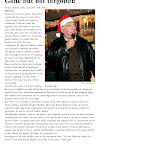

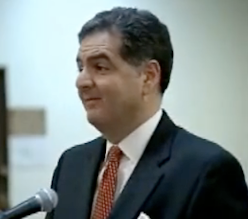
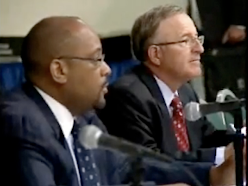
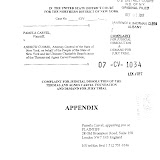
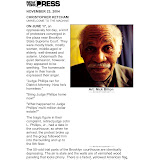
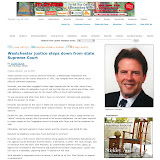
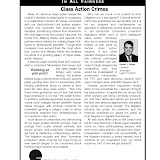

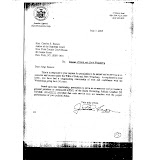
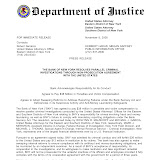
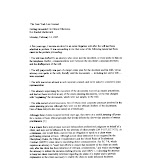

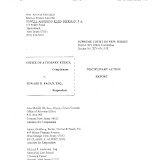
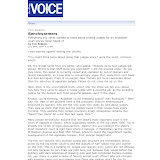

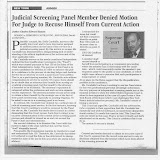

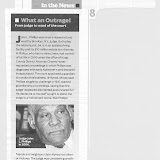
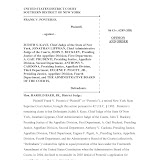
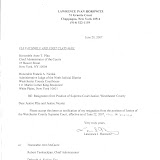
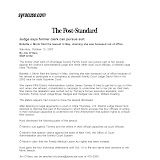
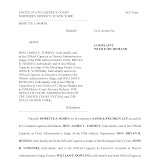

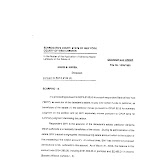
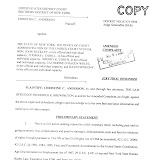
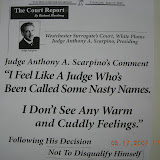
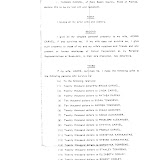
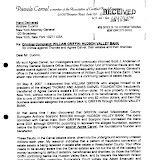
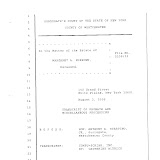
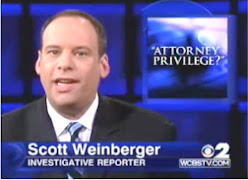
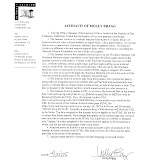

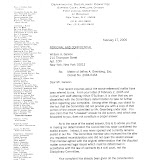
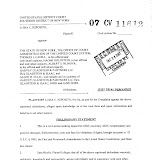
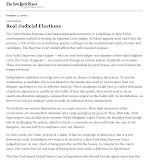
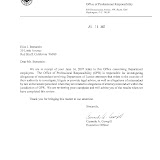
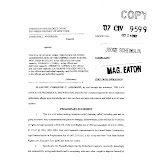
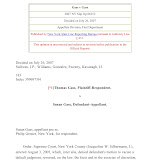
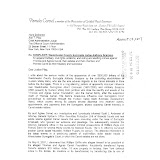

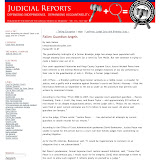
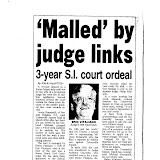

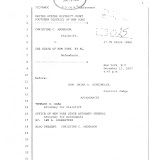
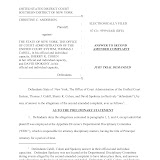
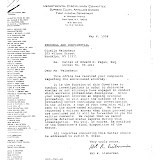
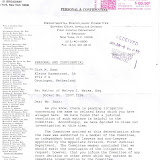
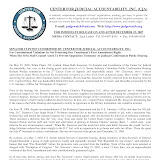

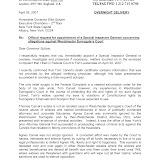
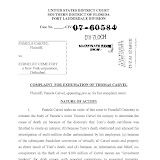
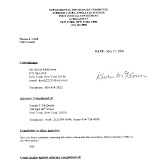
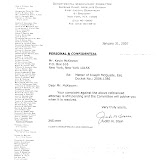
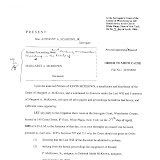
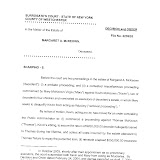
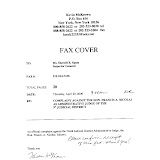
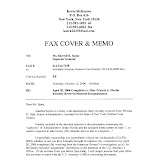
16 comments:
One word describes Judith Kaye: FAILURE
Her betrayal of her oath of office, and the damage to countless children- victims of her failings, will long be remembered.
Her departure could not come soon enough. So, too, the departure of Milonas and Pfau must come, if true reform is ever to be realized.
on Kaye's watch new york state has gone down the tubes, the corruption has spread like cancer
I requested help from both of these Judges who did nothing to prevent a fraud in real time.. So much for the rule that states when a judge sees another commit a serious violation, they must act..
Ignore and turn away is more the reality..
If they can't obey their own rules, exactly how do they administer justice???
Here's an idea.. How about every retainer agreement contains malpractice claim information... registration/bond numbers company etc..
Perhaps every case should start with the same type of disclosure from Judges.. oath/undertaking... etc.. at the time of the RJI..
This way when they break the rules.. a direct claim could perhaps be filed..
Afterall.. they do swear to faithfully administer justice...
and all attorneys are presumed to know and follow the law...
We look for remedy among liars and thieves and wonder what went wrong...
There should be a direct approach for those harmed.. one that doesn't involve an impotent crooked agency's investigation or approval..
Full of sound and fury and doing nothing good. Does she expect this article to improve her position in Hell when she arrives? Evil flourished under her.
Judge Kaye's office was specifically made aware of a whole host of improprieties and misconduct mostly in the Family Court arena involving upstate counties close to New York's capital of Albany.
Judge Kaye's office did NOTHING and one POOR WOMAN / MOTHER who was trying to expose Court Corruption involving the Foster Care and Family Courts was told by her Assigned Appellate Lawyer that the "word from Albany was to back off" on her case and other various threats came as well.
It would be great to hear from that person who previously posted on this Blog that Kaye's Modus Operandi upon learning of these efforts was to call in the SMEAR and Terror Campaign team at the OCA!
GOODBYE KAYE AND GOOD RIDDANCE!!
Juduith Kaye's legacy...oh God, I cannot express it well enough.
Ms Kaye speaks so often and passionately about a non-bias, non-discriminatory court system. But behind the scenes this extoled judge has done directly the opposite!
Kaye has not only been made extensively aware of the court's discrimination and continued abusive, hostile work environment...but she ignored the written complaints, the investigation by her own OIG, which surprisingly ruled against her court system and which she has sheilded illegally the result from the person and union that brought the action, and she has condoned perjury by her highly prepped employees in a federal court proceeding, as well as promoted them for that duty, fired and forced resignations of employees who stood strongly for the illegally fired employee who made such bold allegations for a second time in 15 yrs, and most sickeningly...Kaye participated in and condoned the use of terror and mob tactics against that employee at her personal home, while she resided with her family in the confines of that home, before and after the termination.
Kaye has given quite a bit of blabber about what she claims she did right, but what she has done to damage and destroy the court system of NY state, weighs much stronger and heavier than the accolades of this JUDICIAL NIGHTMARE!
Kaye will be involved in the state court system well after her departure, even though she claims she is thinking and moving ahead...something she has not allowed me and others to do.
My wishes are for her to depart as soon as she can pack up, but the biggest wish is... that of which will expose, tarnish, devastate and remand her to prison for multiple criminal and civil rights violations....all in the name of her acceptance of abuse of power!
Good riddance is a kind way of stating....the jig is up...big momma!
what a joke
Who wrote this?? and what planet do they live on...the planet Kaye?
Every day I am reminded of what these child abusing, corrupt pieces of garbage have done to me and my children. Along with the Lawyers and the "Law Guardians" who flourish in the world Kay has established. She placed a dumpster full of cheese in the legal alley and the rats have had a party for years.
Of my most recent complaints... not one of these agencies could act in real time to prevent a theft..
06/30/08 Suffolk County District Attorney
07/02/08 Suffolk County Attorney
07/02/08 Suffolk County Sheriff
07/02/08 NYS Commission of Investigation
07/03/08 NYS Office of the Attorney General
07/18/08 USDOJ Boyd Johnson
07/22/08 NYS Office of Court Administration
07/25/08 NYS Commission on Judicial Conduct
11/26/08 State Inspector General Joseph Fisch
11/28/08 NYS Attorney General Andrew Cuomo
I AM thinking that when these see what awaits them... they will pray for Hell..
Shoot the messengers (by sending them and email)at the NYLJ.
Try and be nice, Mr. Wise has written a few stories against the establishement. He must have drank the kool aid on this one.
Daniel.Wise@incisivemedia.com, Jeff.Storey@incisivemedia.com
I have personally PLEADED with Kaye to stop the obvious corruption (estranged abusive husband gets my children with false allegations -- perhaps because he happens to be living with Aggie Panepinto-- who shares the same last name as the director of CYO (his boss)Jospeh Panepinto and Joseph Panepinto's wife- Judge Barbara Panepinto)in my case she ignored me they've managed to kidnap my children under color of law and I have had NO CONTACT at all with them since 2002! I hope they all sleep well at nite!
Only one word describes Judge Judith Kaye=Criminal.
It's not just the family court cases she has proven herself to be corrupt and evil. In my own case I had not broken any law at the time of my arrest. Once my lawyer pointed this inconvenient truth out, the DA got on the phone to Kaye and she promptly had the law changed to ensure that my conviction stood. It wasn't changed until after my sentencing, at which time my lawyer spoke to the judge asking for leniency since "my client has not committed any crime, serious or otherwise." Sentencing proceeded nonetheless, and the appellate court (2nd dept) dismissed the prosecutorial misconduct (withholding of exculpatory evidence) and perjury, referring to it as "an error", and the 3 subpoenas we issued to the ADA, "victim" and others were summarily quashed. Now I'm a felon for life because of those bastards. And the judge got all sentimental about how "we have the greatest judicial system in the world" at the beginning and end of my trial. What a joke!
Oh, how I despise NY...
If it is any consolation for you, an atty friend of mine, had ex-governor slug tacky Pataki...change a law that a jury had already determined a money verdict for a client in prison, and changed that law within 2 months before they could collected!
The NY court system and their political protectors...will twist and manipulate the law to fit their personal and professional agendas.
This is America, but you would believe it is thriving in some third world government and change in the massive corruption of it's judicial system, festering in this country... appears constantly out of reach!
The citizens of this state and... country... must become alert and take back what is is guaranted by our constitution.
Post a Comment